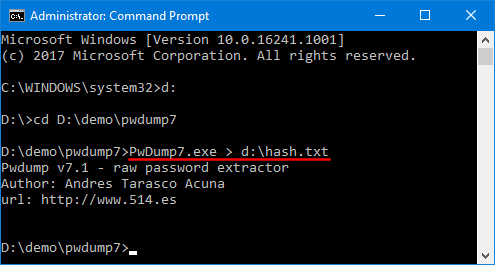Crack Nt Hash Windows 7
Posted : adminOn 12/5/2017
If you want to crack NT hashes as found on Windows Vista by default (the LM Hash column is always empty on the ophcrack main window). Project X16: Cracking Windows Password. NT hashes are Microsoft's 'more secure' hash, used by Windows NT in 1993. You can crack four Windows passwords using.
In my prior article, “” we looked at how safe Windows LM based passwords were. But what about NTLM based Passwords? Windows systems usually store the NTLM hash right along with LM hash, the NT hash being more secure. What many readers wanted to know is how much longer would it take to access the user account, if only the NTLM hash was available?
Zaitoon Ka Encyclopedia Urdu Pdf Novel here. This is a great question, and the answer is, if certain circumstances are met and a certain technique is used, it could take the same amount of time. Even more shocking is the fact that it may actually be quicker. Let me explain, if you can retrieve the LM or NT hashes from a computer, you do not need to crack them.
There is really no need. Sometimes you can simply take the hash as-is and use it as a token to access the system. This technique is called “Pass the Hash”. Several programs exist that perform “Pass the Hash” type attacks.
In this example I used the “Pass the Hash” capability of Backtrack 4. What is nice about this is that once you retrieve the hash, you can copy the hash and place it right into Backtrack 4’s “Pass the Hash” routine. I will not show the step by step process, but will show you the passwords used and the outcome. The password hashes are taken from an updated Windows XP SP3 system and a Windows 7 system. Without further ado, let’s see this in action. First we will try feeding the XP hash for the 17 character password%P”m An open session with the PC and a remote shell.
Looks like it worked Now let’s try the same 17 character complex password on the Windows 7 PC. Placing the Windows 7 hash into the program, we get this: Process 3392 created. Channel 1 created.
Microsoft Windows [Version 6.1.7600] Copyright © 2009 Microsoft Corporation. All Rights reserved.
C: WINDOWS system32>A Windows 7 remote shell. Wow, that worked too. Let’s try one last one: Long pass phrases with multiple words are more secure right?
Password: TheQuickBrownFoxJumpsOverTheLazyD0g! Monster Hunter Iso For Ppsspp Roms Emuparadise. And the results?
A Windows 7 command prompt. Does the password length make any difference at all? Using this technique the answer is no. The password length or complexity made no discernable difference at all, because we are just passing the hash as-is and not cracking it. What can be done to prevent this type of attack?
Using the built in Windows firewall with the Windows 7 machine was a hindrance. I also found that this attack would not work at all on Windows 7 if the User Account Control (UAC) setting was turned on to any level except “Do Not Notify Me”. The utility that many complained about in Windows Vista (and turned off!) actually does improve the security of your system. Additionally, turning off LM and NTLM altogether and enabling NTLMv2 thwarted this attack. This was accomplished by setting the authentication level to “” in the security policy.